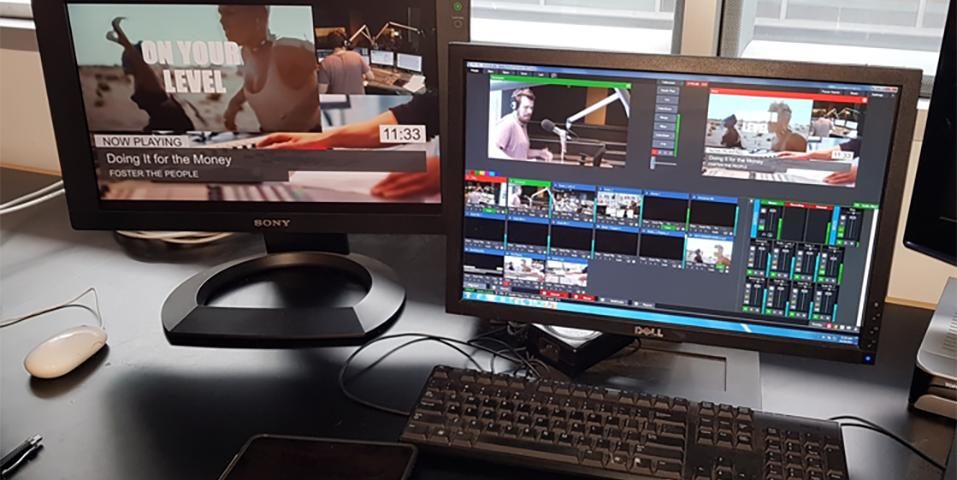Congratulations to AFTRS’ Production Systems Support Officer Tim Mohr for winning the Outstanding Contribution Award in the category of Innovation at the Audiovisual & Educational Technology Management (AETM) Conference last night for the Visual Radio project.
The radio department at AFTRS runs several broadcasts as part of the Graduate Diploma in Radio course which has a near 100% industry employment rate. The broadcasts are streamed over the internet and give students ‘on air’ experience as well as exposure to industry executives who are looking for the next generation of talent for their stations.
AFTRS Radio wanted to showcase more of what happens in a radio broadcast through the video medium and see if it was possible to improve on the single static webcam setup to stream a wide shot of radio studio 1.
Tim Mohr in the engineering department took on the challenge and researched existing ‘multi-cam’ options available for the radio industry. Specifically, the solution should be seamlessly integrated with the current radio equipment at AFTRS and switch cameras automatically without any additional operation by staff or students. Several existing solutions were identified, however they either required manual switching or were beyond the budgets of AFTRS.
Tim Mohr set about designing a solution utilising 5x HD cameras, affordable video switching software and custom software development to add the automated switching logic based on audio levels in the radio audio over IP (AOIP) system used in AFTRS radio.
At the heart of the solution is the video switching software ‘vMix’ which the 5 studio cameras are connected to. Each individual studio microphone as well as the audio playout system are also added as audio inputs to the software. vMix provides an API interface to allow full control of the switcher as well as monitoring of all inputs, including their individual volume status.
Tim Mohr wrote a PHP program that regularly polls the vMix API and builds snapshots of what is currently happening in the studio. Each studio microphone is mapped to a corresponding studio camera, so that when an announcer is talking the program will switch to that camera.
Whenever the playout system is playing a song the software switches to a wide shot and essentially ignores all microphone inputs, allowing announcers and guests to converse ‘off air’ without switching to their cameras.
Once the basic concept was proven, Tim worked on improving the switching logic to handle other common scenarios such as pauses in conversation, multiple people talking over each other and the playing of background music utilizing the radio playout system.
The software now polls the API in bursts and averages out audio over a second to get a more accurate picture of what is currently happening. The software also tries to emulate a human vision switcher, with random delays before switches occur and cutting to wide occasionally to provide context in long conversations. Recently Tim also added artist and song title information taken directly from the radio playout system to be displayed during songs.
Refinements on the software are ongoing with new features added as required. The software has been open sourced and is available under the BSD V3 license on Github.
